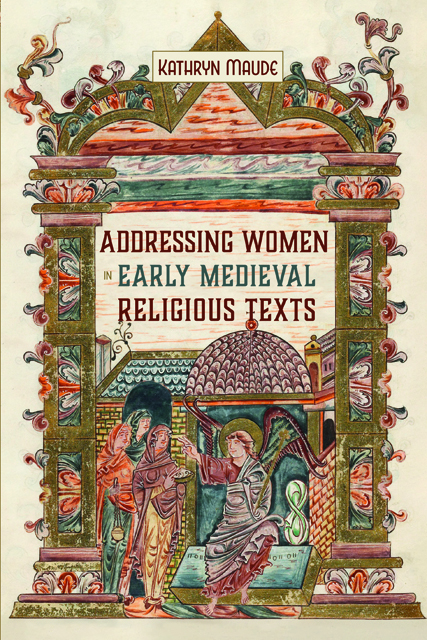Book contents
- Frontmatter
- Dedication
- Contents
- Acknowledgements
- Abbreviations
- Introduction: Behealde ge wif: Addressing Women in Early Medieval England and Scotland
- 1 Addressing Laywomen in Old English Sermons
- 2 Addressing the Recluse in Aelred’s De institutione inclusarum and Goscelin’s Liber confortatorius
- 3 Addressing Holy Women in the Life of Christina of Markyate and the Life of Margaret of Scotland
- 4 Addressing Nuns in Goscelin’s Hagiography for Wilton and Barking Abbeys
- Conclusion: Plebs ecclesiastice discipline: Addressing Women to Include and Exclude
- Bibliography
- Index
- Gender in the Middle Ages
1 - Addressing Laywomen in Old English Sermons
Published online by Cambridge University Press: 14 January 2023
- Frontmatter
- Dedication
- Contents
- Acknowledgements
- Abbreviations
- Introduction: Behealde ge wif: Addressing Women in Early Medieval England and Scotland
- 1 Addressing Laywomen in Old English Sermons
- 2 Addressing the Recluse in Aelred’s De institutione inclusarum and Goscelin’s Liber confortatorius
- 3 Addressing Holy Women in the Life of Christina of Markyate and the Life of Margaret of Scotland
- 4 Addressing Nuns in Goscelin’s Hagiography for Wilton and Barking Abbeys
- Conclusion: Plebs ecclesiastice discipline: Addressing Women to Include and Exclude
- Bibliography
- Index
- Gender in the Middle Ages
Summary
The Old English homily is a monologic form: a one-way, hierarchical text designed to make its listener conform to certain models of Christian behaviour. Focusing on the moments of address in a homily brings to the fore who the homily is trying to change in each preaching moment. The address in these homilies is a public address: standing in church, the listener would have experienced the homily in the company of others. When the homily addresses specific groups – wif, gebroþra, þa ðe on sinscipe wuniað – they are singled out from the mass of Christian listeners and told that they, in particular, must conform to certain standards of behaviour. The homilist imagines an intimate knowledge of them, their sins, and their salvation. As we shall see, though, this claim to intimacy often falls short of actual knowledge. This chapter concentrates on the moments of address in homilies to analyse who the generic Christian listener actually is, and identify moments when the homilist moves away from this generic listener to address specific groups of people. What is at stake in the homilies is nothing less than eternal life: who is being given the tools to attain it, and who is not?
Unlike the Old English saint’s life, which has been the subject of extensive feminist analysis, there is little explicitly feminist literary work on the Old English sermon. What little work there is often focuses on the representation of women: for example, the feminist analyses of Ælfric’s Homily on Judith. Clare Lees and Elaine Treharne’s considerations of Ælfric’s Catholic Homilies draw attention to his writing-out of women, and both Mary Dockray-Miller and Rebecca Hardie have considered the Vercelli Book from the point of view of a possible female audience. In general, though, the Old English sermon has not been considered part of women’s literary history. As the homilies are explicitly invested in creating religious exemplars for women as well as men, this lack of attention to women as addressees of Old English sermons excludes the public face of women’s religious life from feminist scholarship. Understanding how women were addressed in the Old English sermon, then, means that we are able to access the communal scripts from which they were encouraged to construct their lives.
The homilies in Catholic Homilies I and the Vercelli Book were written explicitly for a mixed audience of men and women.
- Type
- Chapter
- Information
- Addressing Women in Early Medieval Religious Texts , pp. 15 - 52Publisher: Boydell & BrewerPrint publication year: 2021



